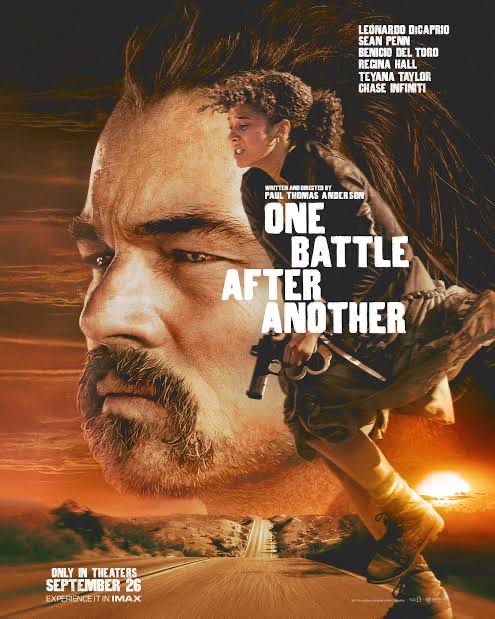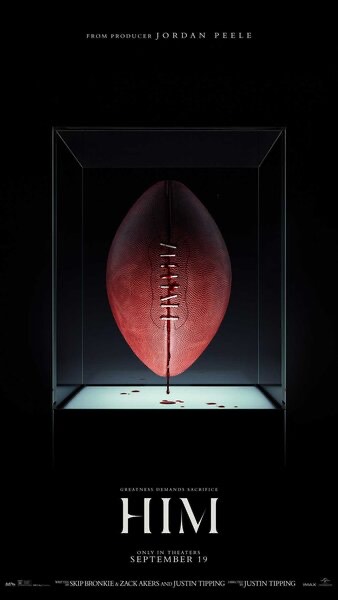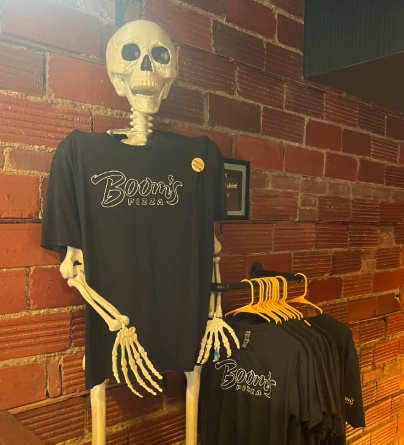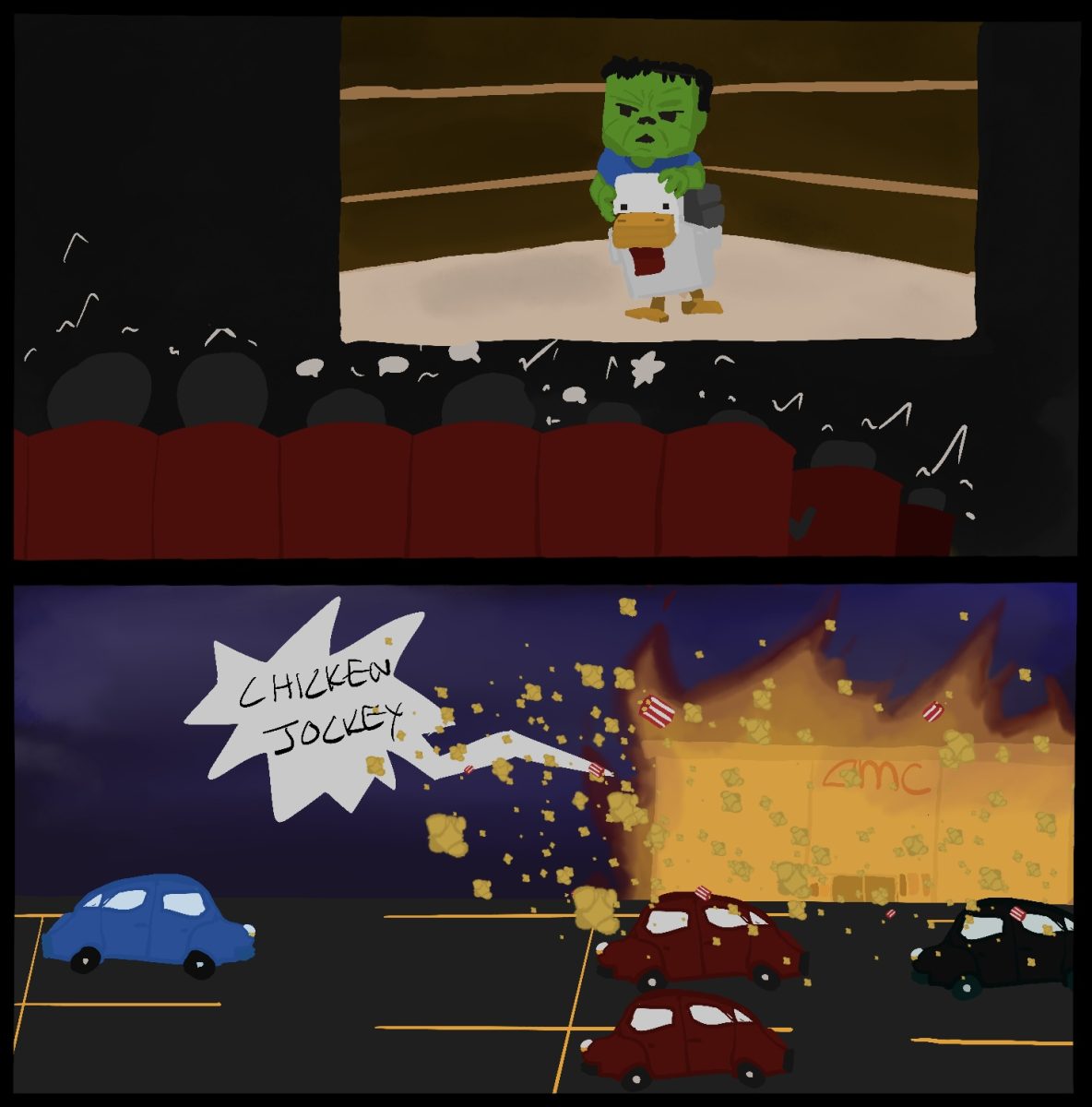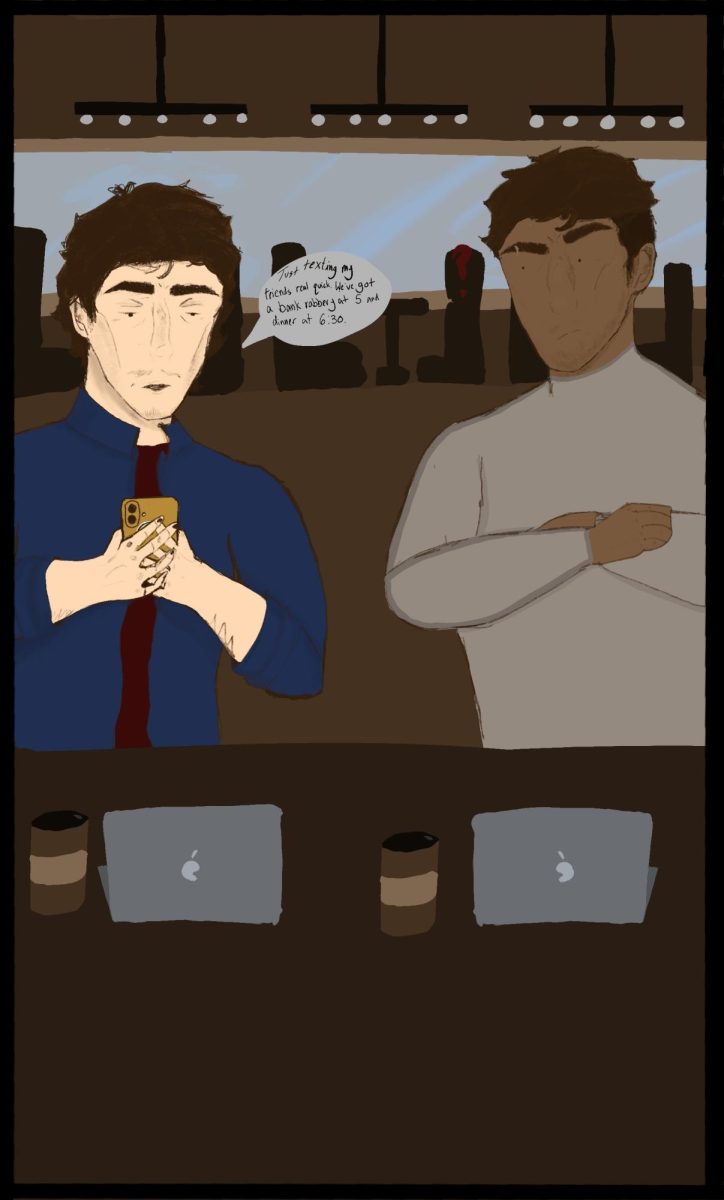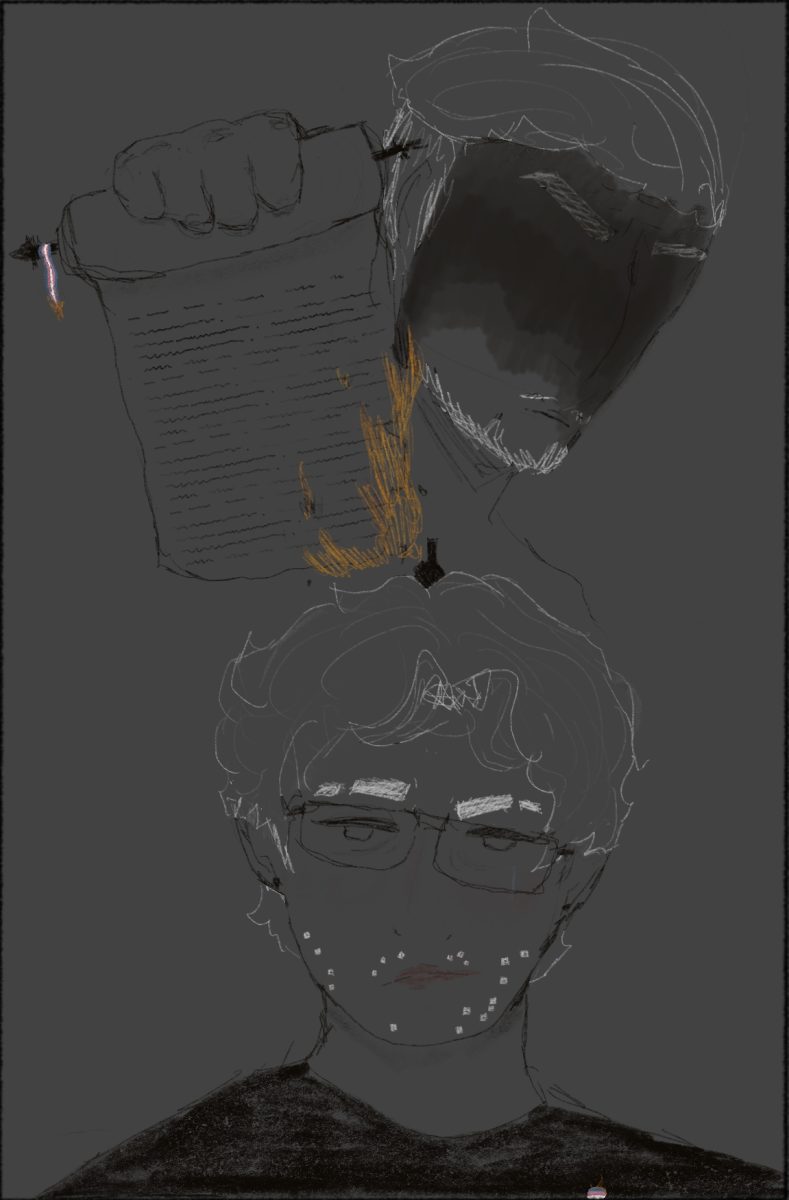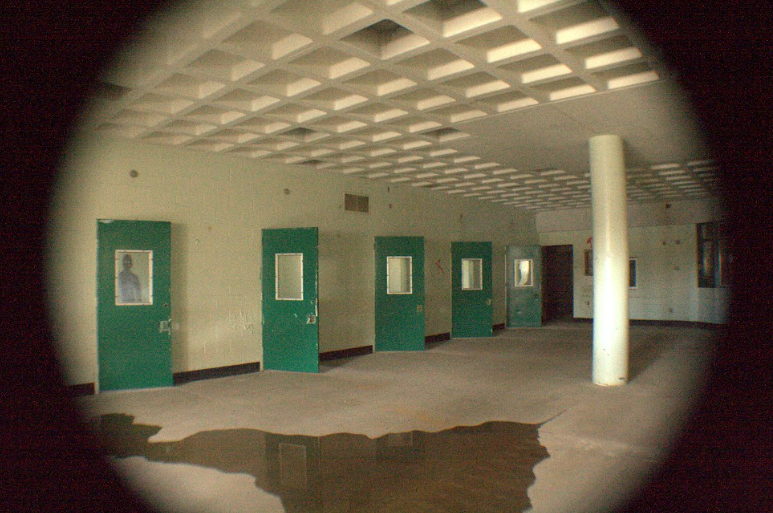Sports and horror are genres that rarely overlap. This previously untapped potential is what has generated so much excitement for Justin Tipping’s 2025 film, HIM.
HIM follows Cameron Cade, a young football player on track to be drafted by his favorite team. After a traumatic head injury, his future in the league is called into question. The opportunity to return to football and get his career back on track presents itself when Cade is offered the chance to train under his idol. The true twisted nature of the plot begins when his training takes an unexpected and horrific turn, revealing the dark secrets within the football industry and the psychopathic nature of his idol.
While the film attempts to deliver a fresh style of horror by incorporating sports elements, it falls flat for several reasons.
The most pressing issue with the film is its constant attempts to be larger than it is, whether in tone or by trying to turn the story into something more grand and complicated than necessary. At first glance, the story appears to be about two men who suffered career-ending injuries and will do anything to become the greatest football players of all time—one having achieved this goal and facing possible retirement, and the other only at the beginning of his career. However, Cameron’s idol, Isaiah White, seems to have unorthodox methods for achieving this goal. When digging deeper, the film is filled with cults, curses, and many mythical elements. While these elements could have made for an interesting film, the psychological horror side clashes with the supernatural, resulting in a difficult-to-follow plot with many unnecessary elements that set up plot points it doesn’t pay off on and pay off on plot points that it did not set up.
While overall the film falls flat, the first act is fantastic and sets up what could have been an almost perfect psychological horror film with cult elements. However, the film relies too heavily on those supernatural components in its conclusion, which ultimately undermines what made the film special.
The film’s visual storytelling is where it shines, but it is often too heavy-handed and on the nose, which can diminish the viewer’s interest. The visuals of the film are breathtaking, with both striking camera movements and beautiful use of color to catch the viewer’s eye. But it often seems as though the visual decisions were made for aesthetic appeal alone or to make for an interesting metaphor, often involving religious imagery that feels tedious and unnecessary. At times, the visuals do make for interesting plot points by misleading the audience and creating tension, resulting in some of the most intriguing plot points in the film.
The film’s strongest points are when it leans into the psychological horror and cult-like elements, but does not include the actively supernatural elements. Sadly, a majority of the scenes that lean into these elements—especially in the latter half of the film—rely too much on the supernatural aspects mixed with heavy-handed metaphors.
The other standout aspects of the film are the fantastic score and performances by leads Tyriq Withers and Marlon Wayans.
Composer Bob Krlic delivers an intense, overpowering score that can fill any scene with fear and intensity. The strong score at the beginning effectively evokes intimidation and fear in the audience, but by the end, it becomes overused—especially during scenes that are not meant to be heavily full of drama and fear—leaving viewers with little emotional reaction when it plays.
Tyriq Withers and Marlon Wayans deliver the film’s standout performances. Their ability to portray both the close, almost familial bond and the capacity to be the best of enemies keeps the audience engaged in their dynamic and relationship. Wayans’ portrayal of Isaiah White evokes fear, as he embodies the strong psychotic mentality of a cult member and the childish rage of a man refusing to give up the spotlight. Cameron Cade’s arc is filled with sloppily written character traits that could be interesting if fleshed out, but, like many aspects of the film, the story instead focuses on trying—and often failing—to confuse the viewer with disturbing elements. It neglects to develop Cade’s character and instead relies on unsettling events to carry the horror. Cade’s emotional conclusion is barely set up throughout the rest of the film, leading to his arc feeling rushed and unnecessary. While the writing leaves much to be desired, Withers delivers a fantastic performance that makes the audience care about such a poorly written character.
HIM is a film full of potential and failed promises. It had the potential to redefine the horror genre and explore new topics within it, but sadly, it falls flat in realizing that promise. A fantastic yet overused score, beautiful visuals, and performances by two talented lead actors are not enough to save the film. With a smaller scale and greater attention to detail, HIM could have been one of the best horror movies in years, but that is not the movie viewers got to see.

















